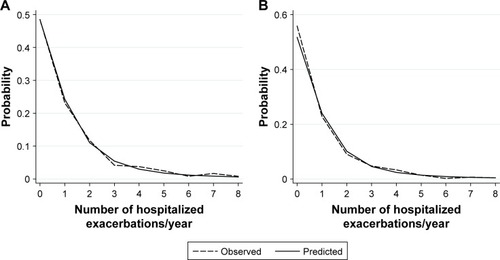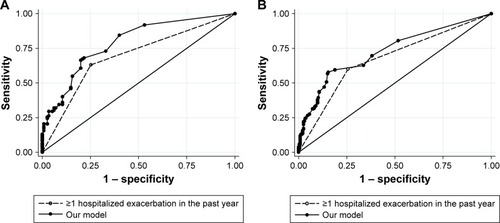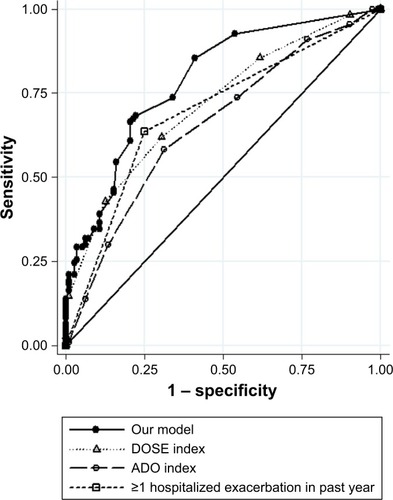Figures & data
Table 1 Patient characteristics
Table 2 Univariate ZINB regression for the primary outcome of number of hospitalized exacerbations/year
Table 3 Final multivariate ZINB regression model for the primary outcome of number of hospitalized exacerbations/year
Figure 1 Observed and predicted values for the primary outcome of annual hospitalized exacerbation rate for (A) the derivation cohort and (B) the multicenter independent validation cohort. Data are shown for hospitalized exacerbation rate of up to eight per year.

Figure 2 ROC curves of our model (solid line and closed circles) and GOLD risk assessment criterion (history of ≥1 exacerbation leading to hospitalization in the previous year, dashed line and open circles) for identifying high-risk patients in (A) the derivation cohort and (B) the independent multicenter validation cohort.
Abbreviations: GOLD, Global Initiative for Chronic Obstructive Lung Disease; ROC, receiver operating characteristics.

Figure 3 ROC curves of our model, DOSE index, ADO index, and GOLD risk assessment criterion (history of ≥1 exacerbation leading to hospitalization in the previous year) for identifying high-risk patients.

